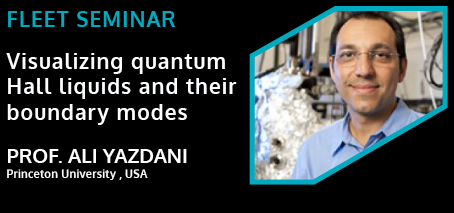-
7 Dec 2018
12:30 pm - 1:30 pm
Visualizing quantum Hall liquids and their boundary modes.
Prof. Ali Yazdani, Princeton University, USA
All welcome!
Bio:
Ali Yazdani is Class of 1909 Chair Professor of Physics at Princeton University and the Director of Princeton Center for Complex Materials. His research program focuses on the development and application of novel experimental methods to directly visualize exotic electronic phenomena in solids. He received his Ph.D. from Stanford University, worked as a scientist at IBM’s Almaden Research Center and was a faculty member at the University of Illinois at Urbana-Champaign, before joining Princeton in 2005.
Abstract:
In a series of experiment on 2D electron gas at the surface of Bi, we have been able to probe a number of novel features of quantum Hall liquids for the first time. First, we have been able to use the scanning tunneling microscope (STM) to directly visualize Landau orbits in real space. This new technique has been used to show that the electronic states associated with the valley state on the surface of Bi form nematic quantum Hall liquids. [1] By tuning the magnetic field, we have been able to stabilize different type nematic fluids, and have been able uncover a ferroelectric quantum Hall liquid that forms when only one of the valley get occupied. [2] We are able to demonstrate that the formation of these quantum Hall phases are driven by electron-electron interaction. Finally, in the most recent experiment, we have been able to uncover domain walls between different nematic quantum Hall states and to direct image the 1D Luttinger liquids that form at such interfaces. This new type of Luttinger liquids can become metallic or insulating depending on the number of valley-textured edge modes. [3]
References
[1] B. Feldman et al. Science 354 6310 (2016).
[2] Randeria et al. Nature Physics, 14 1709 (2018)
[3] Randeria et al. to appear Nature (2019)
Venue: G31 Old Main Building, K15 UNSW
Address:

